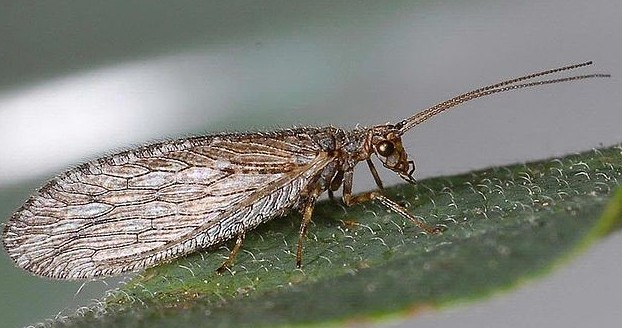
Brown lacewings are in the insect family Hemerobiidae and are more closely related to duskywings than to green lacewings. Although common world wild, brown lacewings are most abundant in North America west of the Rocky Mountains where they in habit woods, forests, and fields. The adults are brown or beige often with four lighter brown membranous wings covered with hairs. Their bodies are 3/8 to 5/8 ” long , their compound eyes are brown, and their long antennae are covered with short brown hairs. The alligator-shaped larvae are white at first turning brown with maturity. They have a few bristles on their bodies and a sickle-shaped jaw. Both adults and larvae are predaceous and feed on aphids, mealybugs, mites, whiteflies, thrips, scale insects, leaf hoppers, pear psylla, other soft bodied insects, caterpillars of many different moths and insect eggs.
Female brown lacewings lay their oval, pink or white eggs singly on a leaf surface near a food supply. Larva emerge in about four days and scavenge on plants and in the soil debris as they go through three instars stages. They pupate in a loosely woven transparent cocoon attached to plants or under bark.
To attract and maintain a population of brown lacewings, select diverse native plants that include shrubs and grasses to provide cover and a suitable habitat for the brown lacewings to carry out their life cycle. Since both adult and larval forms are predacious and eat a wide variety of prey the planting of attractive flowers is only important in attracting prey. Avoid the use of pesticides as much as possible.